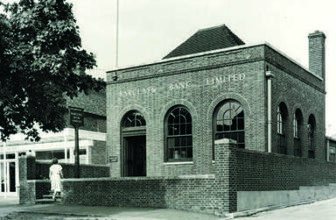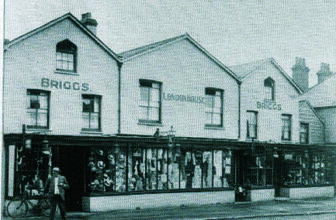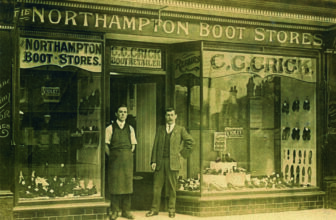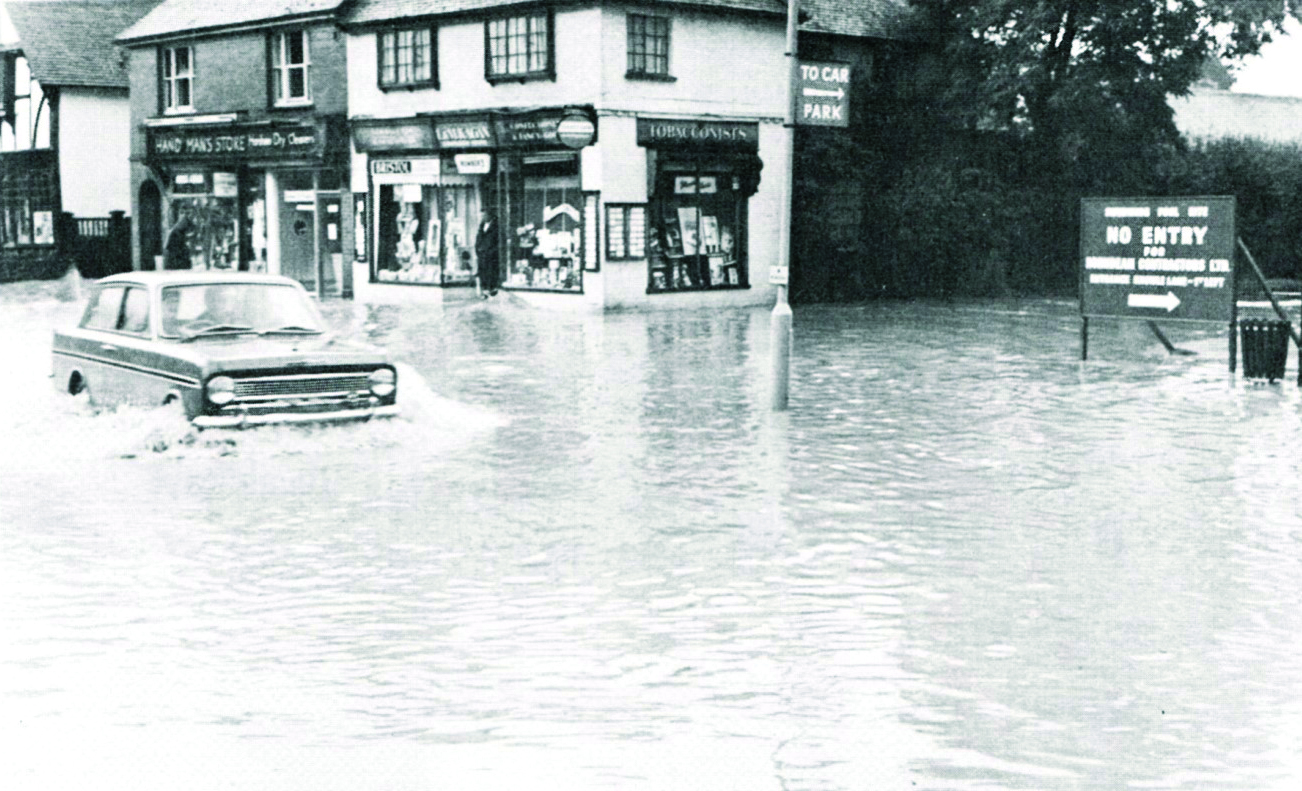
The High Street, outside what is now Burns & Webber. Ironically, the sign on the right is headed ‘Swimming Pool Site’ (Surrey Advertiser)
‘Does the date September 15th, 1968 mean anything to you?’ a friend asked me. It didn’t, but there must be many Cranleigh people who would immediately reply, ‘The Great Flood’.
This affected the whole of south-east England, from Essex to the Sussex/Hampshire border. Torrential rain on the weekend of September 14th-15th caused rivers to burst their banks, and sent swirling, muddy water through towns and villages. The Surrey Advertiser reported that 4.67 inches of rain fell. Thousands of people were forced to leave their homes.
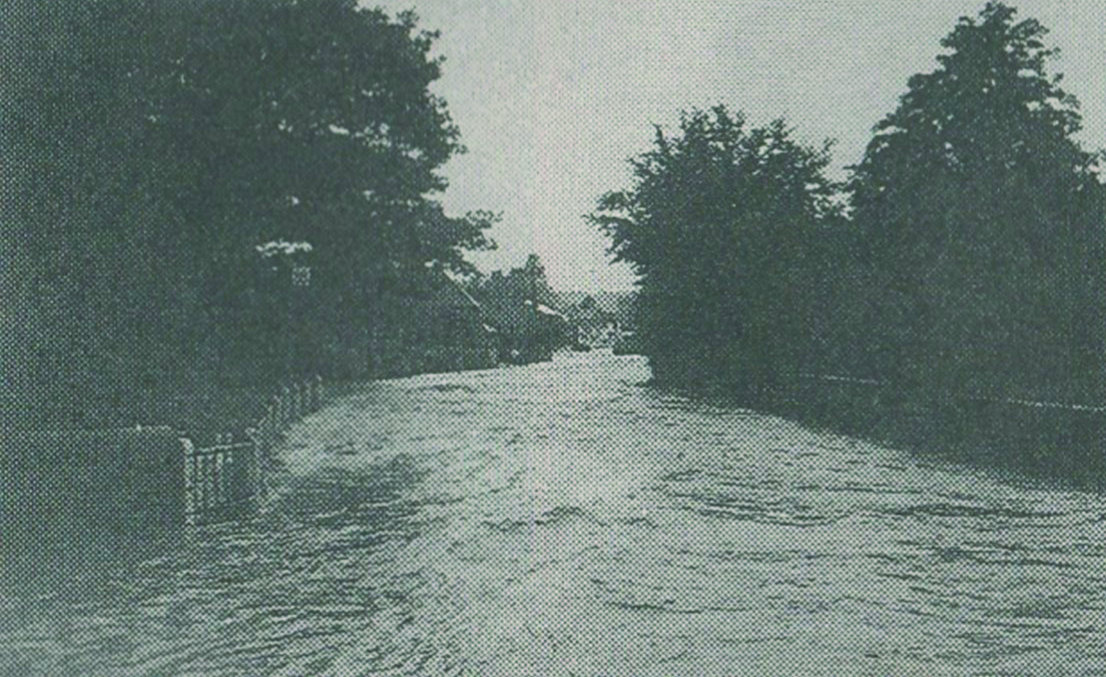
The strength of the water in Ewhurst Road (Surrey Advertiser)
In Cranleigh, the rainwater streamed down from the Surrey Hills, and completely overwhelmed the existing drainage systems. It transformed Ewhurst Road into a river. At the house of Bert Lade (Sussex House), next to his butcher’s shop (now Cranleigh Memorials) six inches of water came in by both the front and back doors. The British Legion (now Legion House) was flooded, as were several nearby shops. The water flowed down Mead Road, and cars were abandoned in Horsham Road. Homes on the new estates of Overford Road, Overford Close and Redcroft Walk were inundated. The floodwater washed through the High Street, flowing down Knowle Lane and even reaching the cricket ground.
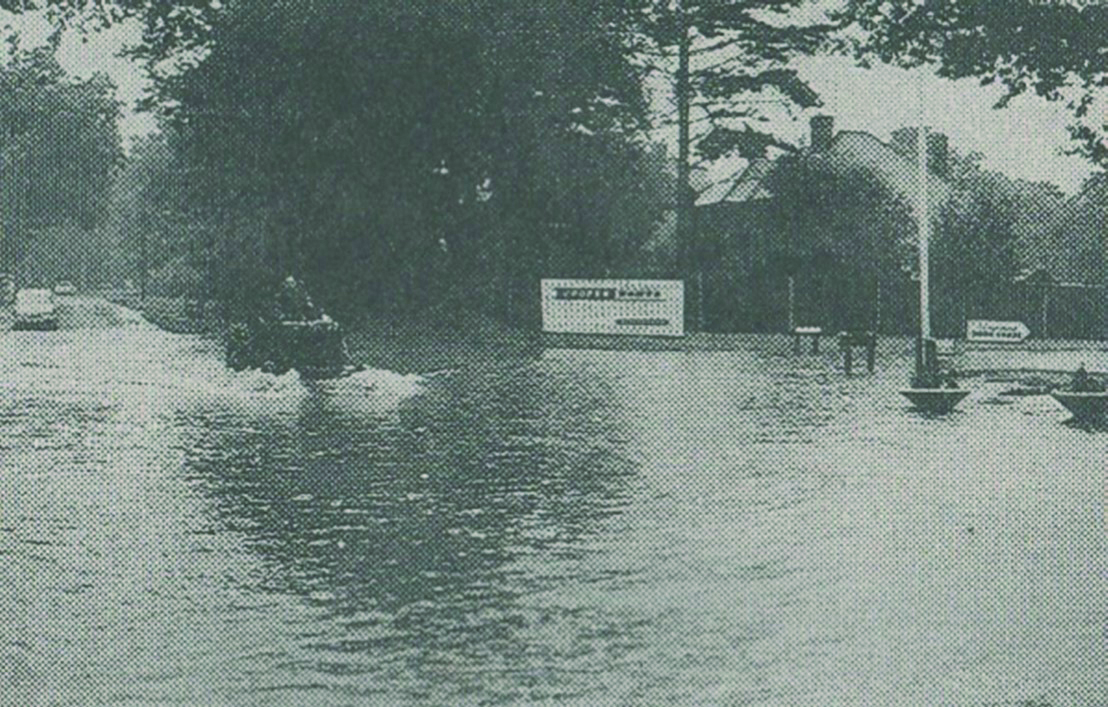
Entrance to the Hitherwood estate, off Horsham Road (Surrey Advertiser)
It rose several feet in the cellars of Tyler’s, the high-class grocer’s by the fountain. All the bottles of wine stored here for customers lost their labels, and it took days to match bottles with labels, with the help of records in the ‘cellar book’. A milkman’s electric float in St James’s Place short-circuited and drove itself across the main road and into the pond. The Baptist Church contrived to hold a Sunday morning service, but with only eleven adults (plus children) present, and the organ disabled by an electricity cut. At nearby Swiss Cottage, the water ‘swept in like a tornado’, wrecking much of the furniture and all the food in the larder.
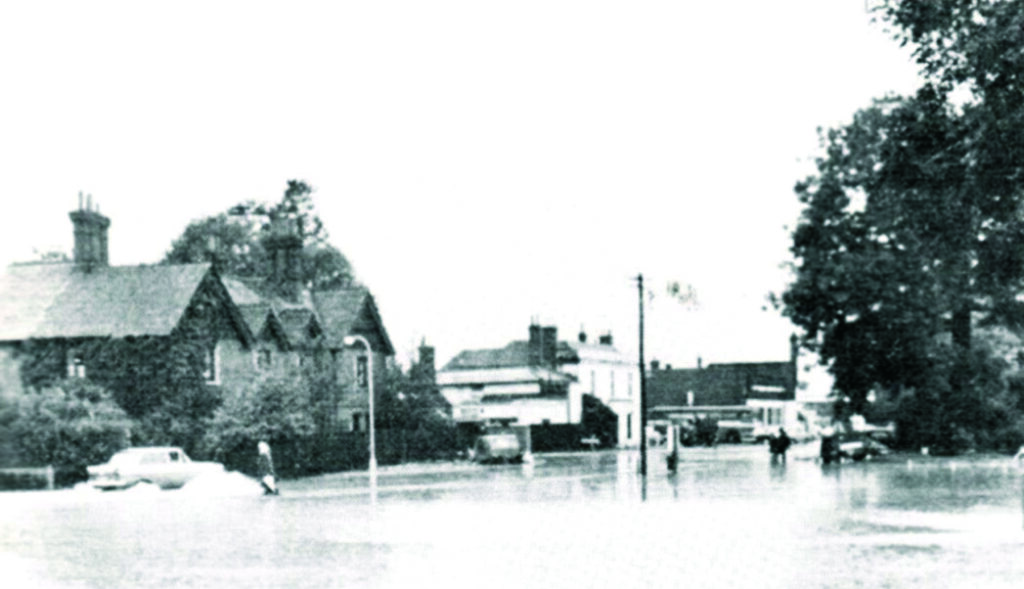
Brookmead (the vet’s) and Broadoak (TWM solicitors), from near the Police House
The Regal Cinema (on the site of the present Pavilion House, opposite the Cricket Ground) suffered about £1,000-worth of damage, as ten rows of seats were saturated. Fortunately, the stocks of cigarettes and chocolates were saved. The local fire officer, Mr H.H. Buckman, estimated that more than 400 houses were flooded early on that Sunday morning. He spent fifteen hours that day pumping out water, and a further twelve hours on the Monday. Roads became impassable within a few hours. A coach party going to Worthing was stranded in the village. Other motorists who entered Cranleigh were likewise unable to leave. Fifty people were put up for the night in the church hall, with local people bringing blankets and food.
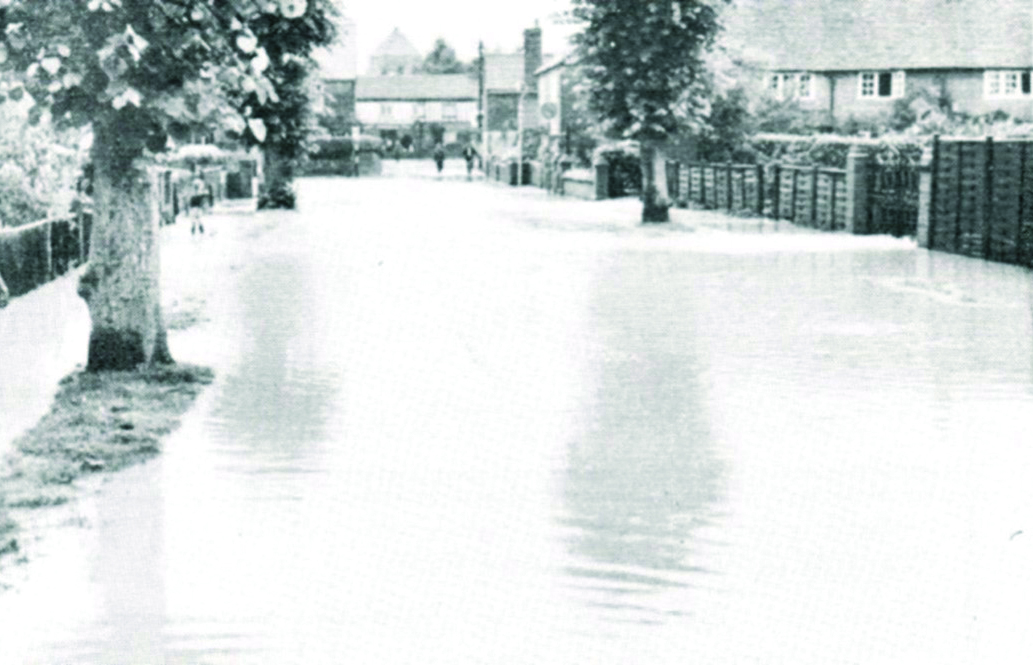
Mead Road to Ewhurst Road (the church tower is visible at the end of the road)
At 1.00am on Tuesday September 17th, a team from the R.A.F. at Thorney Island arrived, and worked all through the night and the next day. With large ground heaters, normally used to dry out radar and other electrical equipment, they restored the sewage pumping station, and houses in Overford Close.
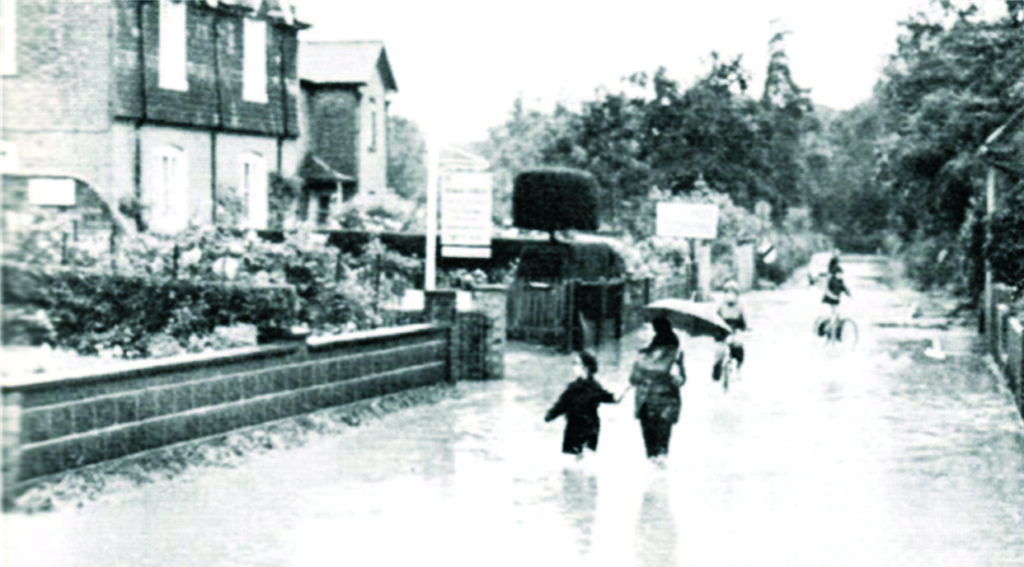
Deep water in Knowle Lane
Even after the floodwater had subsided, it was a long and arduous task to dry out houses. Unpleasantly smelling silt was everywhere. Government advice recommended taking all floor coverings outside and washing the floor. Wallpaper should be stripped off flooded walls, and skirting boards removed.
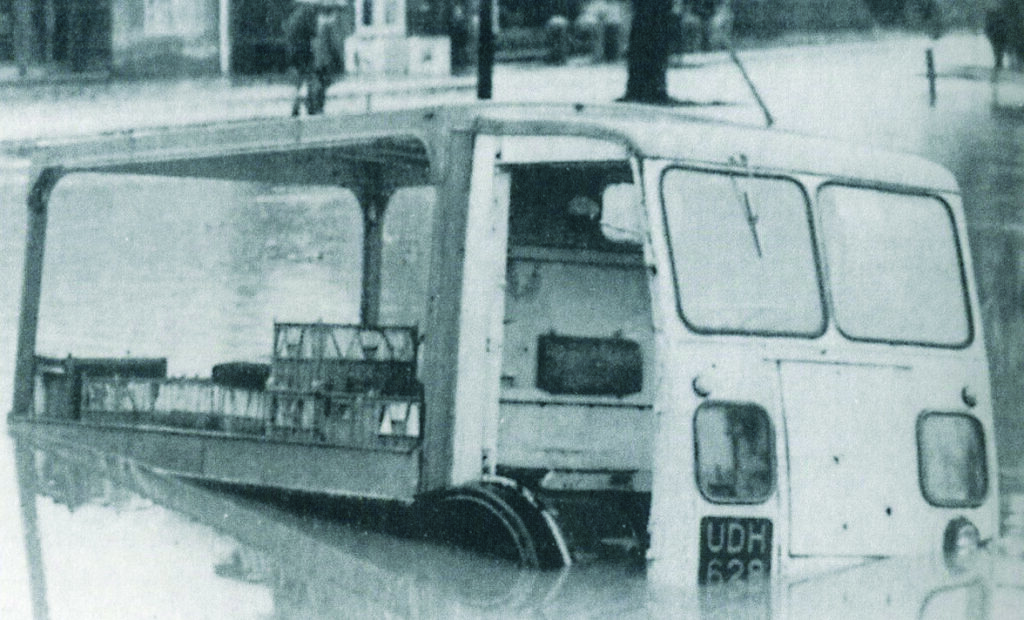
The milk float of George Puttock, in the pond on the Common (Cranleigh Voices)
It was not only Cranleigh who suffered. On Monday September 16th, the Evening Standard declared that ‘the whole of the South-East was a scene of desolation, with swollen rivers, blocked roads, impassable railway lines, fallen bridges and swamped houses’. More than 1,000 square miles had become a vast lakeland.
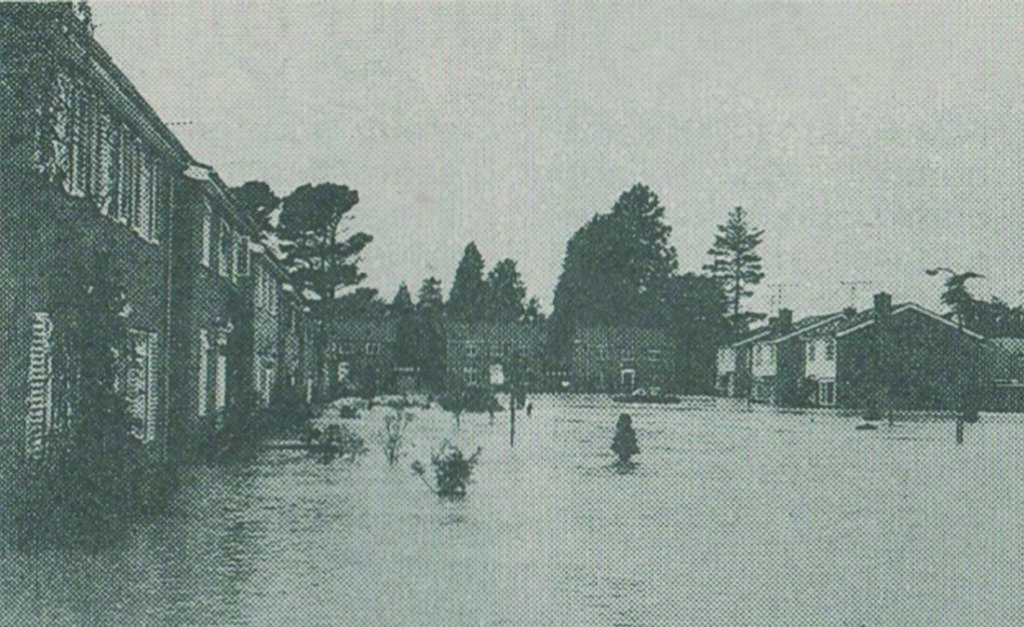
Overford Close (Surrey Advertiser)
Later a new surface water and drainage system was put into place in Cranleigh, at considerable cost, and Cranleigh has not suffered any further floods of this magnitude.
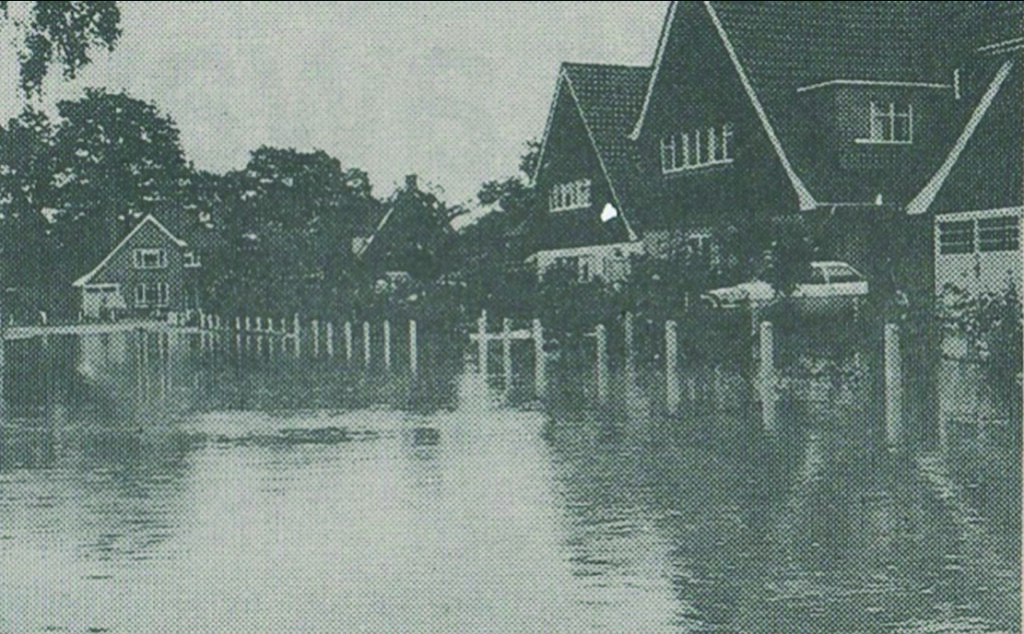
Redcroft Walk (Surrey Advertiser)
(With grateful thanks to Mrs Audrey Sayers for the generous gift of a large file of newspaper cuttings concerning the flood.)
The Cranleigh History Society plans to resume its monthly meetings as soon as the Covid regulations permit.



